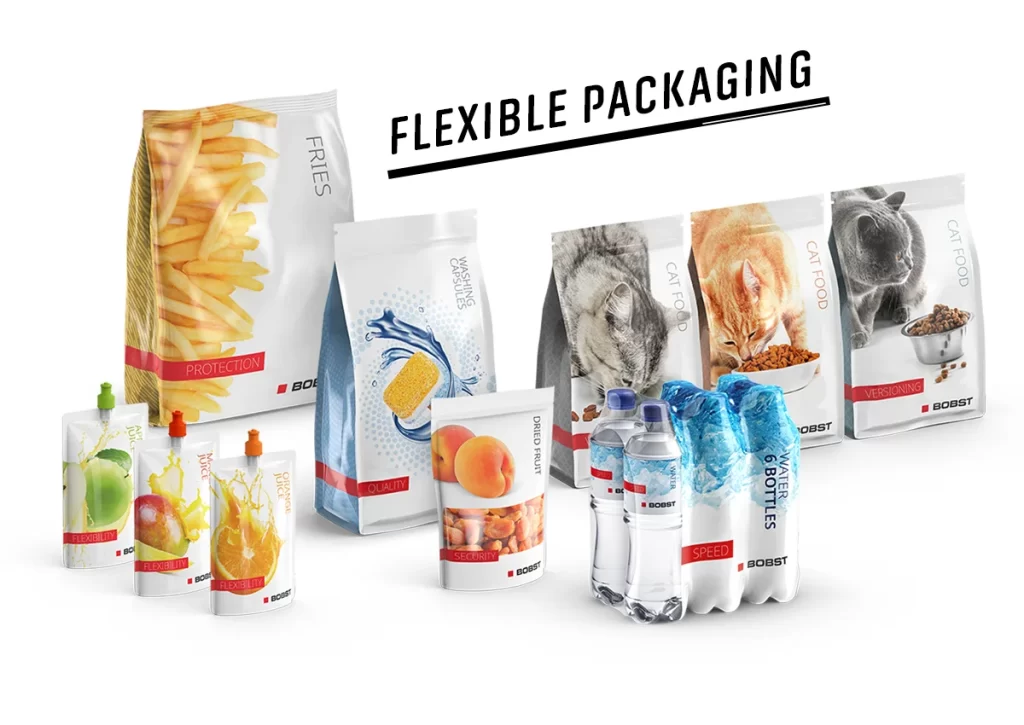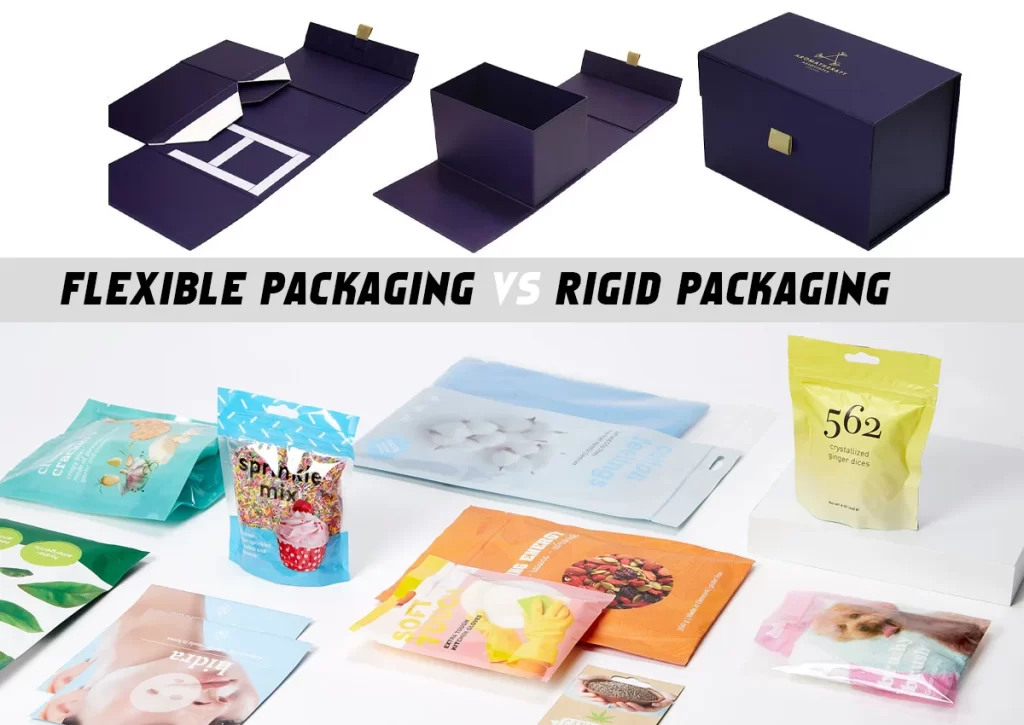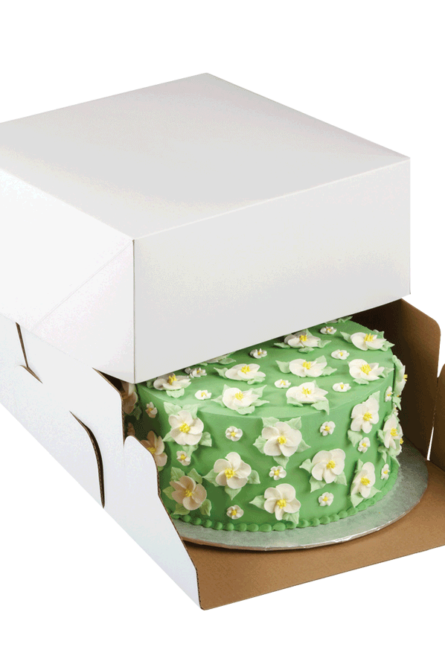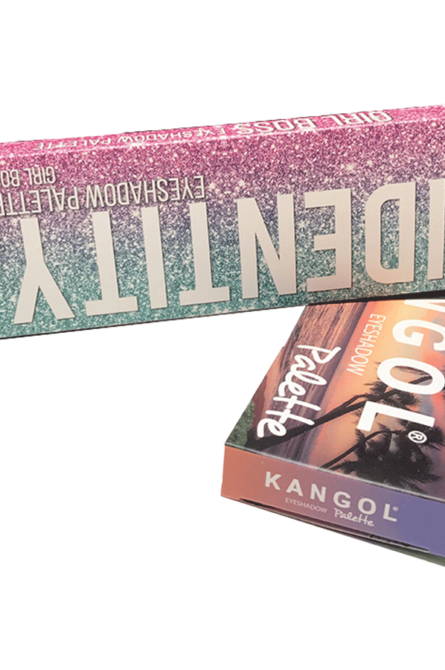25

By: Harry Lee
Want to know the secret behind why your favourite snacks stay fresh, and your fragile items arrive safely? Flexible packages are like potato chip bags that crumple in your palm, while rigid packaging is like your sturdy box of cereal.
Food, cosmetics, or whatever you the thing you find has either of the two kinds of packaging. Do you know the real difference and also why it matters?
Let’s have a quick look at the unique features and the difference between flexible packaging and rigid packaging!
What is Flexible Packaging?

Choosing flexible vs rigid packaging is a real debate. Flexible packaging uses non-rigid materials like plastics, foils, or paper. The best examples are packaging bags, pouches, and wraps. All these options change their shapes when filling.
Pros
Usually cheaper to manufacture and transport due to its lightweight nature, it entails lesser material wastage, which makes it so much better for the environment. Many flexible packs are easy to open, carry, and store, and sometimes they are resealable, keeping the food fresh for prolonged periods. And you can apply very decorative prints on them!
Cons
- Less strength than the rigid counterpart, thus poorly protecting vulnerable goods.
- The recyclability of flexible plastic is, at times, limited, raising environmental questions.
- There are storage conditions for some flexible packaging that may impart taste or odour to the food.
- Works worse than a box when it comes to standing.
Style
Flexible packaging is available in many types and shapes. You can find them in the form of stand-up pouches, flat bags, sachets for single servings, and wraps for things like snacks. These bags can also have features like zippers, spouts, and tear notches for easy use.
What Is Rigid Packaging?

Do you know what rigid packaging is? Rigid packaging is the keeper in the packaging scenario. It is firm and non-bending packaging with a structural member that preserves its form in the presence of any foreign load or impact. Rigid packaging examples are PR packages, glass bottles, jars, plastic tubes, etc.
Advantages
Various types of rigid packaging provide good protection for the contents, especially fragile ones. This packaging has a more premium feel of quality. Also, it can get more attention for your product. Many rigid materials, such as glass and many plastics, are easy to recycle. Furthermore, it can promote food and drink shelf life by acting as a strong barrier.
Disadvantages
- Often, it is more expensive to manufacture and transport because it is heavier and bulkier.
- It can create more waste if not recycled.
- Less disruptive designs from the common market are also possible when working with stiff materials as opposed to pouches or wraps.
- Should one drop them, glass may shatter and metal may dent.
Style
Custom rigid boxes include cardboard boxes for any product, from cereal to electronics; glass bottles and jars for drinks, sauces, and cosmetics; metal cans for soups and beverages; and hard plastic containers for yoghurt and some cleaning products. They are often finished with lids, caps, or specially designed closures..
The Key Differences: Flexible vs. Rigid Packaging
You can notice the clear difference between rigid packaging vs flexible packaging. Although both serve the function of protecting goods and presenting them to the consumer, flexible and rigid packaging diverge significantly along many key aspects that affect companies and consumers in the UK:
Material and Structure
Flexible packaging materials comprise flexible films or laminates that can easily change shape. Rigid packaging uses harder materials such as cardboard, glass, or rigid plastics that are there to hold the unchangeable form.
Protection
By and large, rigid packaging offers harsher protection from external physical damage, compression, and aggressors from the environment. The degree of protection from flexible packaging contrasts with the significant uncertainties of the materials employed.
Price and Transport
Flexible packaging beats on the weight and space with a corresponding decrease in transport and storage cost-rigid packaging innately increases cost on both dimensions.
Environmental Effects
Flexible packaging uses, by weight and volume, less material than conventional rigid packaging and hence presents a better option to reducing dumps. The issue with recycling of complicated flexible laminates creates a whole different problem. Most rigid materials are recyclable, especially glass and some plastics.
Design and branding
Rigid packaging offers limited customisation choices in terms of shapes and sizes. It can be costly to add aesthetics to this packaging. On the contrary, flexible packaging gives you multiple convenient options for shapes, sizes, and printing designs. And guess what? All these elements are best to entice consumers.
Convenience
Flexible packaging gives you convenience for add-ons like easy-open notches, resealable zippers, and spouts. In contrast, rigid packaging is easier to stack and store on shelves and at home.
Sustainability and the Future of Packaging

The packaging impact on the environment is an increasingly critical concern for businesses and consumers alike in the UK. Flexible as well as rigid packages come under scrutiny due to their sustainability.
In any case, the future can likely see a kind of hybrid between rigid packaging vs flexible packaging, with both focused on circular economy principles-moins waste, more sustainable resources. Perhaps finding the right balance will be the key to guaranteeing effective barrier development for products with a minimal environmental footprint.
Concluding Thoughts
Choosing between rigid or flexible packaging is not an either-or decision, for which one can be called better universally. It needs a detailed and thorough consideration of various matters. The particular requirements of the product, the aims of the company, and the choices of the UK market.
The advantages of both types of packaging are highly relevant, and they are being reengineered and innovated to satisfy the evolving needs of the 21st century. With the help of all the influencing factors discussed above, companies will be able to assess and make decisions that would strike a balance between protection, cost, and brand appeal. Also, it primarily affects environmental friendliness and consumer satisfaction by matching their products to an optimal answer.
Want to know more? Follow Packaging Bee for all the latest updates!









